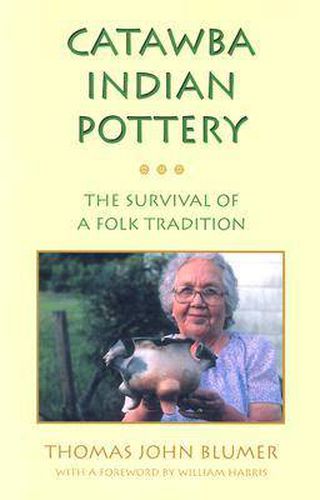Readings Newsletter
Become a Readings Member to make your shopping experience even easier.
Sign in or sign up for free!
You’re not far away from qualifying for FREE standard shipping within Australia
You’ve qualified for FREE standard shipping within Australia
The cart is loading…






When Europeans encountered them, the Catawba Indians were living along the river and throughout the valley that carries their name near the present North Carolina-South Carolina border. Archaeologists later collected and identified categories of pottery types belonging to the historic Catawba and extrapolated an association with their protohistoric and prehistoric predecessors. In this volume, Thomas Blumer traces the construction techniques of those documented ceramics to the lineage of their probable present-day master potters - or, in other words, he traces the Catawba pottery traditions. By mining data from archives and the oral traditions of contemporary potters, Blumer reconstructs sales circuits regularly traveled by Catawba peddlers and thereby illuminates unresolved questions regarding trade routes in the protohistoric period. In addition, the author details particular techniques of the representative potters - factors such as clay selection, tool use, decoration, and firing techniques - which influence their styles. In assessing the work, David G. Moore, of Warren Wilson College, states,
This book represents an enormous body of work concerned with a significant topic - the persistence of the Catawba Indian pottery tradition. Using his extensive fieldwork and a narrative presentation, the author juxtaposes the evolving ceramic technology with a fascinating discussion of the role of pottery in changing Catawba economy from the 18th and continuing into the 21st century.
$9.00 standard shipping within Australia
FREE standard shipping within Australia for orders over $100.00
Express & International shipping calculated at checkout
When Europeans encountered them, the Catawba Indians were living along the river and throughout the valley that carries their name near the present North Carolina-South Carolina border. Archaeologists later collected and identified categories of pottery types belonging to the historic Catawba and extrapolated an association with their protohistoric and prehistoric predecessors. In this volume, Thomas Blumer traces the construction techniques of those documented ceramics to the lineage of their probable present-day master potters - or, in other words, he traces the Catawba pottery traditions. By mining data from archives and the oral traditions of contemporary potters, Blumer reconstructs sales circuits regularly traveled by Catawba peddlers and thereby illuminates unresolved questions regarding trade routes in the protohistoric period. In addition, the author details particular techniques of the representative potters - factors such as clay selection, tool use, decoration, and firing techniques - which influence their styles. In assessing the work, David G. Moore, of Warren Wilson College, states,
This book represents an enormous body of work concerned with a significant topic - the persistence of the Catawba Indian pottery tradition. Using his extensive fieldwork and a narrative presentation, the author juxtaposes the evolving ceramic technology with a fascinating discussion of the role of pottery in changing Catawba economy from the 18th and continuing into the 21st century.